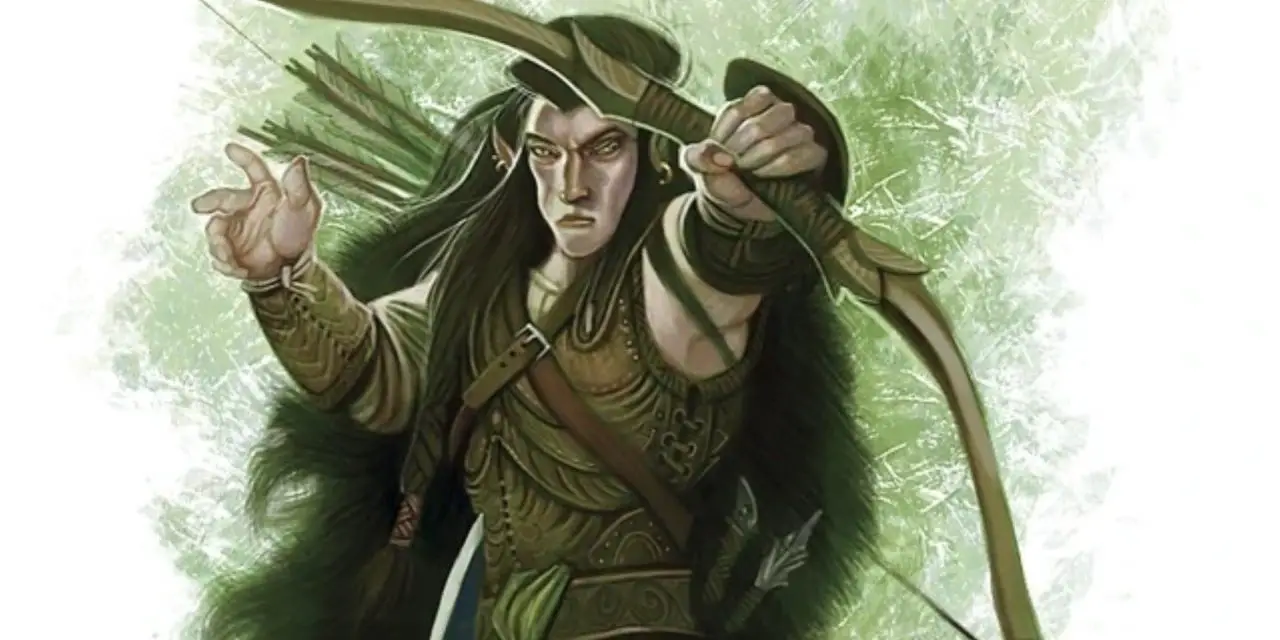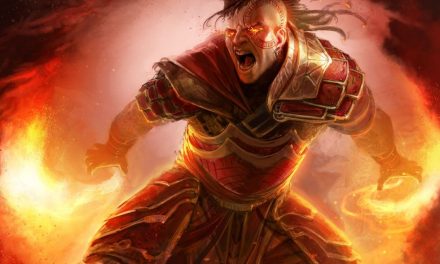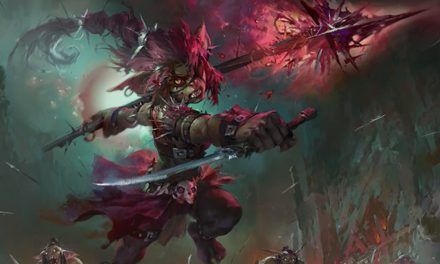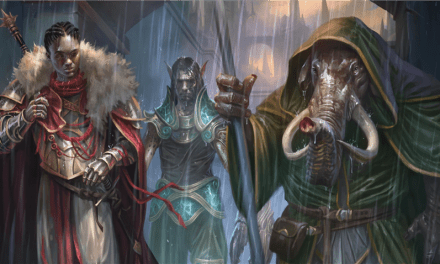For those who prefer to keep a distance, there’s always Ranged Combat in D&D 5e.
There is no shortage of flavors to making a ranged combatant in D&D 5e. Something about the speed and accuracy that goes into such a character is just cool.
Unleashing hard-hitting attacks from range is incredibly useful to a party’s composition. The party’s beefier characters (like Paladins or Fighters) can keep the enemy’s aggression on them while you are able to pick off your targets from a distance.
Weapons For Ranged Combat in D&D 5e
There’s no shortage of ranged options for characters to use. From the more common bows and crossbows to slings and thrown weapons, the choice is yours!
Bows
There are two types of bows in D&D 5e.
Shortbows are simple ranged weapons that do not require the extra training needed to use a Longbow.
Longbows deal more damage and have a greater range than shortbows.
Crossbows
There are three types of crossbows available to adventurers. Crossbows pack more punch than a regular bow, but they all have the “loading” property which we’ll discuss in more depth later in this article.
Hand crossbows are the smallest option. What they lack in range and power they make up for with being a light weapon that can be wielded in one hand.
Light Crossbows are the most common type of crossbow. As a simple ranged weapon, one does not need the specialized training that Hand Crossbows and Heavy Crossbows require to use one.
Heavy Crossbows hit hard, but are too unwieldy to be used effectively by Small creatures like Halflings or Goblins.
Slings
The most basic of ranged weapons can still be dangerous in the right hands! While the Sling doesn’t have the range of the bow or crossbow, there’s never a shortage of rocks to fling at enemies. Monks, in particular, may be drawn to using a Sling as a monk weapon!
Thrown
There are several types of weapons that can be thrown at enemies.
Quick skirmishing types that are most often focused on ranged combat may be most drawn to throwing Daggers or Darts at their enemies.
Stronger characters may be drawn to throwing weapons such as spears, tridents, or javelins.
Related: Mastering Throwing Weapons in D&D 5e
Blowguns
Blowguns require specialized training to use. While they only deal 1 point of piercing damage, they can be a great method of poisoning enemies when discretion is needed.
Ranged Attacks in D&D 5e Explained
Ranged combat in D&D 5e works very similarly to close combat. When making an attack, roll your d20, add your ability and proficiency modifiers, and compare your result to the target’s Armor Class.
Most ranged attacks will be made using your Dexterity ability. There may be some occasions in which it’s made with a different ability score, but leave that to the Dungeon Master.
All of these mechanics can be found in the 5e Player’s Handbook, but I’ll elaborate on them for you here!
Range
When looking at the properties of a ranged weapon, you will see two numbers in parenthesis and separated by a slash.
A light crossbow, for example, says “Range (80/320)”
This is meant to show the effective range of the weapon.
The first number shows the weapon’s normal range. In the case of the light crossbow, there are no difficulties in attacking an enemy within 80 feet. The only exception is if the target is within 5 feet of you, but we’ll get to Close Combat shortly.
The second number is the weapon’s maximum range. Attacking a target that is between the normal and maximum range of the weapon means that the attack will be at disadvantage. In the case of the light crossbow, this means that attacking any target that is more than 80 feet away and less than 320 feet away will be at disadvantage.
You can read more about what advantage and disadvantage mean by clicking here!
There may be times where you have to make the decision to take a particularly long shot at an enemy, so be prepared for that!
Your attacks cannot exceed the maximum range of the weapon.
Close Combat
If you’re attempting to use a ranged attack and an enemy is within 5 feet of you, your attack is at disadvantage.
It’s worth noting that this isn’t just your target that has to be more than 5 feet away. If any enemy who can see you and isn’t incapacitated is within 5 feet of you, your attack is at disadvantage.
It’s difficult to aim when you’ve got an enemy swinging their weapon in your face!
(As a quick note, this same rule also applies to ranged spell attacks!)
Positioning
Positioning is your primary consideration in ranged combat in D&D 5e.
Think of it like Goldilocks, you don’t want to be too close or too far away from the action. As a ranged combatant, you want to focus on making sure that your positioning is just right.
You need to make sure that you have a line of sight on your enemies as well. Cover is something that should be constantly watched out for as intelligent enemies will not hesitate to hide from your shots.
You want to find positions that keep you away from enemies that may try to rush you that also give you good enough lines of sight to stop enemies from taking cover. No character needs to be more aware of the battlefield as a whole than the ranged combatant.
Ammunition
Keeping track of your arrows and bolts can admittedly be a little bit of a pain. You’ll want to make sure that you always have enough handy, so it’s wise to keep some coin to the side so that you can restock when visiting towns.
However, this isn’t a terrible price to pay for the safety of ranged combat.
Some D&D groups may not even bother keeping up with ammunition, so it’s wise to check with the DM and see.
For those who do keep track, you’ll want to stay well-stocked and take time to recover used ammunition after each combat. This is done by spending 1 minute after combat to recover half of your used arrows or bolts. It’s assumed that the other half are broken or missing. Naturally, explosive arrows or bolts can’t be recovered.
The Loading Property
Crossbows and Blowguns all have the Loading property.
This means that they are only able to fire once upon making an attack with an action, bonus action, or reaction. Even if you would typically get extra attacks, you are not able to fire the weapon again until your next turn when it is loaded.
If you plan on using a crossbow, you will definitely want to look into taking the Crossbow Expert feat.
How to Improve Your Ranged Combat in D&D 5e
There are numerous ways to improve your ranged combat ability in D&D 5e.
Increasing your ability scores, particularly Dexterity, are the quickest way to get the most bang for your buck.
You may also come across particularly useful magic items and equipment that gives you bonuses to your ranged attacks.
But there are some other ways to increase your ability to rain damage onto your enemies from afar.
Fighting Style: Archery
Classes like the Ranger and Fighter get access to Fighting Styles that help them hone their prowess in a particular style of combat.
Taking the Archery fighting style gives you a bonus +2 to all attack rolls made with ranged weapons.
While +2 may not seem like much up front, it’s a fantastic bonus. If you can’t hit enemies, you aren’t being an effective combatant!
If you’re playing a Fighter or Ranger, you will definitely want to pick up the Archery Fighting Style as soon as possible.
Feats For Ranged Combat in D&D 5e
In addition to what we’ve already mentioned, there are some standout feats available to those looking to specialize in ranged combat in D&D 5e.
These are all great options and really help ranged combat come alive.
Sharpshooter
Sharpshooter is an amazing feat for ranged combatants in 5e with a bunch of incredible bonuses.
First and foremost, you ignore long-distance penalties. If you’re using a longbow and want to hit somebody 600 feet away, not having disadvantage is just beautiful and cinematic.
Secondly, your shots ignore all but total cover. While enemies who are peeking over a barricade or around a corner would typically be much harder to hit, you aren’t even worried about it.
Perhaps most awesome of all is the ability to take a penalty to your attack roll and dish out a ton of extra damage.
By taking a -5 to your attack roll, a successful hit will deal an additional 10 damage to the target.
If you’re facing a big enemy with a low Armor Class, have already buffed your attack bonuses (such as with the Archery Fighting Style), and/or just enjoy taking risks to gain huge rewards, this is an awesome ability.
However, even if you are a bit more risk-averse, the other abilities offered by Sharpshooter make this feat absolutely worth it and one of the best feats in the game.
Elven Accuracy
Xanathar’s Guide To Everything introduced some incredible new feats and one of my favorites is the Elven Accuracy feat.
This doesn’t exclusively apply to only ranged attacks, but it can only be taken by Elves and Half-Elves.
The character increases their Dexterity, Intelligence, Wisdom, or Charisma by 1 to a maximum of 20.
But best of all is that when they make an attack with advantage using their Dexterity, Intelligence, Wisdom, or Charisma, they can reroll one of the d20.
Effectively, you get to roll 3d20 on an attack using these scores when you have advantage, which is crazy awesome.
If your character is able to consistently get advantage on their attacks and is either an elf or half-elf, this is a must-have feat. This is most easily achieved by Rogues (or characters who have at least taken a couple Rogue levels) who want to gain advantage by Hiding from enemies with their Cunning Action feature.
Crossbow Expert
If crossbows are more your style, the Crossbow Expert feat is for you!
This is another feat that just piles on the bonuses.
With Crossbow Expert, you get to ignore the “Loading” Property of crossbows which frees you up to send as many bolts flying at your enemy as you can.
You also get to ignore that nasty penalty for having an enemy be within 5 feet of you!
Lastly, you can now follow up an attack with a one-handed weapon by using a bonus action to attack with a loaded crossbow in your other hand.
This feat is particularly excellent for hand crossbow users.
No more worries about disadvantage from being too close to the action. Firing as many times as you can attack in a round. Mixing it up by following up your other attacks with a well-placed crossbow shot.
The Crossbow Expert feat is both mechanically useful and incredibly cinematic.
Conclusion: Ranged Combat in D&D 5e
There’s a lot to Ranged Combat in D&D 5e, but that’s a large amount of what makes it so fun.
You don’t have to worry about getting bored by just saying “I shoot arrows” over and over. By focusing on the battlefield’s terrain and taking advantage of your ability to get some awesome positioning, you can pump out some crazy amounts of damage in relative safety.
Even if your character isn’t primarily a ranged fighter, it’s good to understand how ranged combat in D&D 5e works. There will always be those pesky flying enemies that force the barbarian to put away their axe. More clever enemies may seek to ambush the party from a high vantage point, but a Sharpshooter can still fire back at them.









